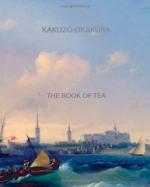
|
| Name: _________________________ | Period: ___________________ |
This test consists of 15 multiple choice questions and 5 short answer questions.
Multiple Choice Questions
1. When was tea first brought to Europe?
(a) The late-1300s.
(b) The late-1500s.
(c) The late-1400s.
(d) The late-1200s.
2. Many did not accept efforts of modernization. There are several _________________________ documented from this time period, and many more scholars and others who attempted to preserve the old culture resisted modernization.
(a) Wars.
(b) Petitions.
(c) Rallies.
(d) Rebellions.
3. What is the word for the "religion of aestheticism," which has grown up around tea in Japanese culture?
(a) Teaism.
(b) T-ism.
(c) Teatimism.
(d) Tea-Taoism.
4. There are many similarities between Taoism and Zennism, including the emphasis on the individual and what?
(a) Symmetry.
(b) The community.
(c) Architecture.
(d) Self-concentration.
5. Okakura used tea as a symbol for what in East Asia?
(a) Life.
(b) Art.
(c) Love.
(d) Freedom.
6. Modernization came with a price, namely, the destruction of what?
(a) The 'old' or traditional way of Japanese living.
(b) The power of the empire.
(c) The welfare system in Japan.
(d) The health of the Japanese people.
7. When was this power of tea shown?
(a) By the late-1500s.
(b) By the late-1700s.
(c) By the late-1600s.
(d) By the late-1400s.
8. Have Asians in turn developed the same for this culture?
(a) Not at first.
(b) At first.
(c) Yes.
(d) No.
9. Many Japanese treated heirlooms and traditional art as what?
(a) Family jewels.
(b) Precious treasures.
(c) Little more than junk.
(d) Everyday items.
10. It is said that a man named Kwanyin presented to his master Lao Tzu tea in what?
(a) A large tea cup.
(b) One of the first tea ceremonies.
(c) The first known tea ceremony.
(d) A large tea ceremony.
11. He studied at an English-language university, and was fluent in what three languages?
(a) Chinese, Korean, and Japanese.
(b) Chinese, English, and Japanese.
(c) English, French, and Japanese.
(d) Chinese, French, and Japanese.
12. The editor sees ___________ distinct sides of Okakura which he would alternately exhibit.
(a) Four.
(b) Six.
(c) Three.
(d) Five.
13. What is another side?
(a) The sentimentalist.
(b) The friend.
(c) The self-assured.
(d) The knowing one.
14. Tea began as what and only gradually grew into a beverage?
(a) A poison.
(b) A drug.
(c) A medicine.
(d) A lotion.
15. Some statesmen, philosophers, and artists of the West could be referred to as what?
(a) "Tea-lovers."
(b) "Tea-fiends."
(c) "Tea-aestheticians."
(d) "Tea-philosophers."
Short Answer Questions
1. What cannot be disputed is that, in his time, he was one of the greatest _____________ scholars, and his knowledge of this art was unparalleled.
2. Okakura again emphasizes that tea can do what for a culture?
3. Taoism and its successor, _____________, represent an individualistic trend in Southern Chinese thought.
4. The harm we do to others is a result of what?
5. What represents a harmonious synthesis of these personalities?
|
This section contains 453 words (approx. 2 pages at 300 words per page) |

|




